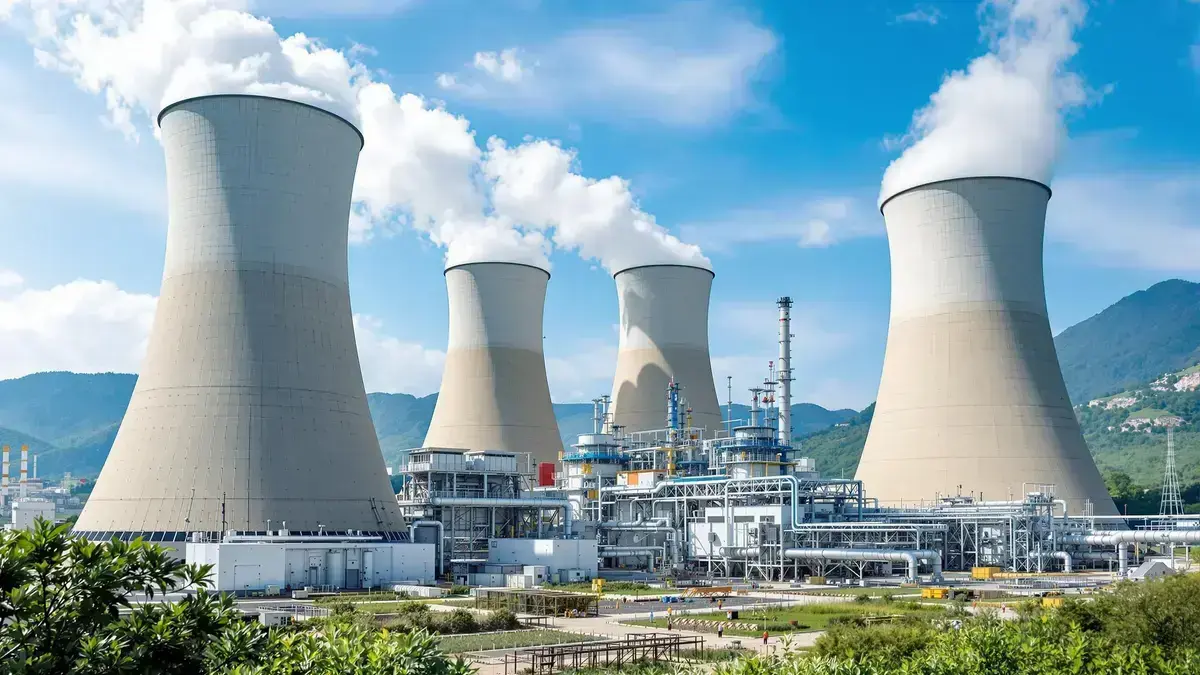South Korea is positioning itself as a pioneer of the energy transition with an innovative power plant that utilizes a chemical looping combustion system (CLC). This technology enables the capture of 96% of CO₂ emissions, while significantly reducing NOₓ levels. With the world premiere of steam production via CLC, this initiative paves the way for a sustainable and responsible energy future, inspiring other countries to follow this ecological example.
The essence of the information
- A revolutionary power plant in South Korea employs a chemical looping combustion system.
- This technology allows for the capture of 96% of CO₂ emissions while reducing NOₓ.
- The plant is the first in the world to produce steam in this manner, with 30% lower costs for CO₂ capture.
- It can capture up to 150,000 tons of CO₂ per year, making it a pioneer of the sustainable energy transition.
South Korea Innovates with a Revolutionary Power Plant
At the heart of the global energy transformation, South Korea has unveiled a remarkable technological advance with a new power plant that utilizes a chemical looping combustion system (CLC). This innovation could redefine the standards for energy production while taking significant steps toward sustainability.
Chemical Looping Combustion System (CLC)
The chemical looping combustion system represents a significant advance in energy technology. By harnessing this process, the plant can capture up to 96% of CO₂ emissions produced during combustion, placing South Korea at the forefront of the fight against climate change.
Significant Reduction of NOₓ
In addition to CO₂ capture, this technology enables a significant reduction of NOₓ, harmful pollutants for the environment and human health. This greatly improves air quality, contributing to better public health while complying with stricter environmental standards.
World Premiere of Steam Production via CLC
This project also marks a world premiere for steam production using CLC technology. This advancement will not only improve the efficiency of industrial processes but also enhance the country’s capacity to produce energy more effectively from renewable sources.
Capacity to Produce Electricity More Efficiently
With this technology, the plant claims a capacity to produce electricity more efficiently, which could reduce dependence on fossil fuels. The impact will be tangible on energy costs while contributing to a cleaner energy future.
30% Lower Costs for CO₂ Capture
Another significant aspect is the 30% decrease in CO₂ capture costs, making this technology not only ecologically viable but also economically feasible. This cost reduction could encourage other countries to invest in similar solutions.
Potential to Capture 150,000 Tons of CO₂ per Year
The plant has the potential to capture 150,000 tons of CO₂ per year, providing a robust solution in the fight against greenhouse gas emissions. This could be a game changer for global efforts to meet emission reduction targets.
Substantial Economic Benefits of the Technology
The economic benefits of this technology far exceed the ecological aspects. The implementation of such a power plant could generate thousands of jobs in the green technology sector, stimulating the local economy while promoting sustainability.
Pioneer of a Sustainable Energy Transition
South Korea is positioning itself as a pioneer of a sustainable energy transition, inspiring other countries to embrace ecological solutions. Its power plant could become a model for nations looking to reduce their carbon footprint while maintaining economic growth.
An Opening to a Responsible and Innovative Energy Future
In conclusion, this monumental achievement in South Korea opens the door to a responsible and innovative energy future. By capturing CO₂ emissions and reducing harmful pollutants, this country demonstrates that forward-thinking solutions are both possible and necessary for sustainable development.

